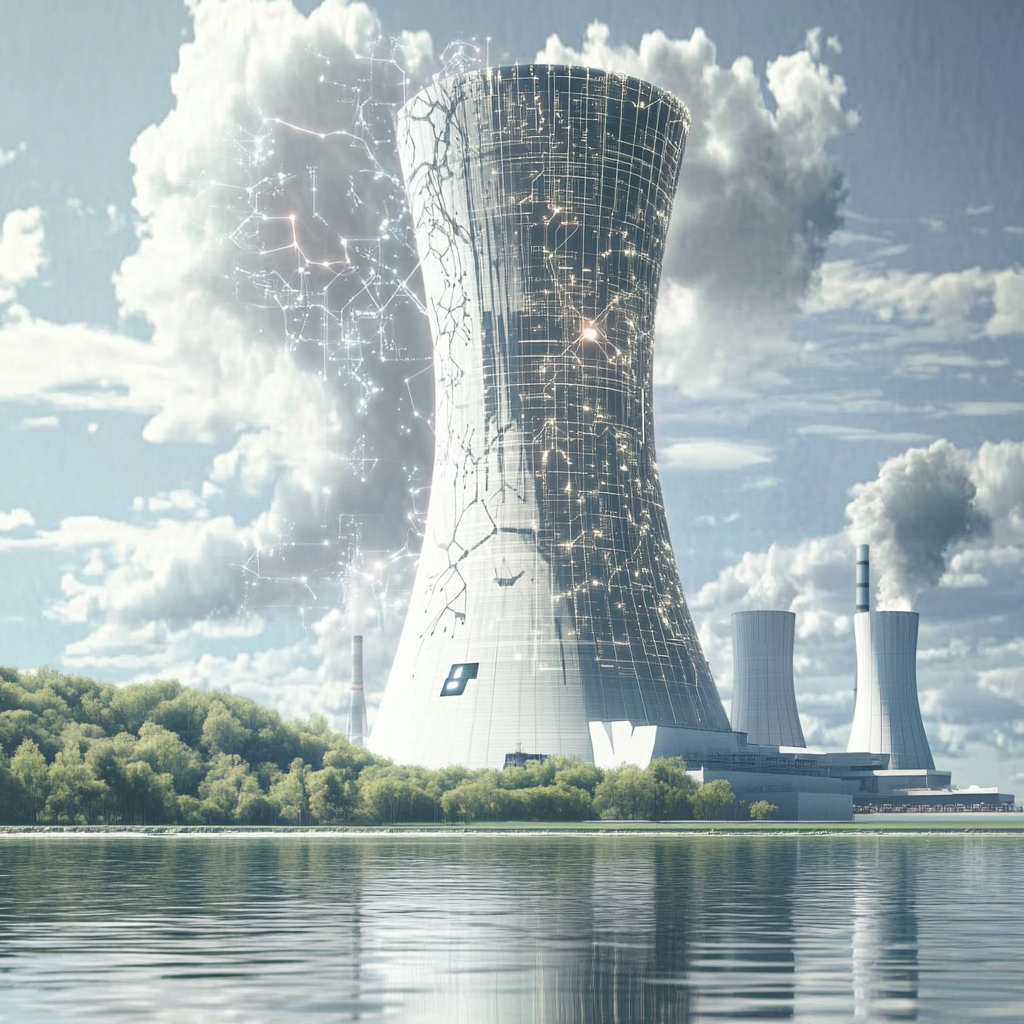
November 04, 2024
AI Titans Powering the Future: A Bold Investment in Nuclear Tech
Microsoft…
Google’s parent company Alphabet…
Amazon…
One after another, these pioneers in the artificial intelligence (AI) space sounded an alarm.
They realize that the much-hyped AI revolution requires a vast amount of energy—more than they can secure from existing sources.
The simple solution would be cheap, carbon-intense power. However, Big Tech must maintain its environmental ratings and choose clean energy sources.
The future of AI will depend on a steady power supply. Unfortunately, wind or solar power won’t solve this problem, as the sun doesn’t shine, and the wind doesn’t blow, 24/7.
The only viable option that remains is nuclear power.
Microsoft managed to invest in the restart of a large-scale nuclear plant. However, others were late and had to invest in new tech on a smaller scale.
We’re talking about small modular reactors (SMRs), which AI giants, banks, and governments are betting on.
Let’s see how retail investors can position themselves in this niche market.
The Major Bottleneck
AI is one of the most prominent breakthrough technologies of this century. In just a few years, it was widely adopted by most industries.
Those who welcomed this tech saw massive benefits for their operations and, as a result, premium market valuations.
Those who ignored are already lagging, if not altogether bankrupt.
While the final users receive well-trained, simple, and intuitive assistance via ChatGPT, Copilot, or other platforms, the backend of these technologies is not as clean.
Massive data centers run nonstop, day and night. Companies developing AI tools keep expanding their capacity and adding more equipment.
These data centers have become highly energy-consuming, which has become a major bottleneck. Even if NVIDIA or another hardware maker can boost their chip output, Big Tech still requires a massive power supply to keep these up and running.
That’s where Google (technically, its parent company Alphabet), Amazon, Microsoft, and others hit the wall.
The only viable option they see is to invest in power plants directly.
For the above reasons, nuclear power is the only option that can deliver a steady power supply.
So far, Microsoft has signed a power supply deal with Constellation Energy, the owner of the Three Mile Island power plant. The plant will restart one of the reactors that shut down in 2019 for economic reasons.
Constellation Energy has surged 20% on the news and has risen more than 100% so far this year.
Alphabet and Amazon are betting on SMRs. These portable reactors have lower power output yet they can supply up to 300 megawatts (MW) versus 1,000 MW at a full-scale nuclear plant.
That’s not bad at all.
Moreover, these reactors are modular. That means adding more units will easily scale their capacity.
With enough power supply and stable internet, the new data centers can be deployed anywhere.
That’s a huge advantage.
On a country scale, Taiwan, as a leading chip producer, has also become supportive of nuclear power.
“We hope that Taiwan can also catch up with global trends and new nuclear technologies,” said Premier Cho Jung-tai.
China has long supported nuclear power. The country has 56 active reactors, 31 are in construction, and it plans to build another 158.
Not to mention SMRs.
The Asian countries are getting ready for the inevitable expansion into the AI space.
One thing that unites both large-scale reactors and SMRs is nuclear fuel.
Uranium
Uranium is in the core of any nuclear plant. It is a metal that is nearly impossible to substitute with something else.
(There are other radioactive minerals, but none have proven stable on an industrial scale yet.)
While uranium is not rare, only a handful of miners and fuel producers mine it. Permits for radioactive materials are hard to get, so existing players have a moat.
That’s why when Big Tech started making its power investment plans public, most uranium equities surged to 52-week highs.
Investors have realized the potential and rushed into the uranium sector.
Most of the companies posted significant gains.
The White House is also investing in nuclear fuel. The government awarded $2.7 billion to establish domestic enrichment facilities.
Major banks also supported the uranium sector. Morgan Stanley, Barclays, Bank of America, City, Goldman Sachs… the list goes on.
Conclusion
We believe it’s only the start of a long bull market in uranium. Hence, nuclear-related equities still have solid gain potential in the years to come.
Investors should put on their watch list companies fitting these descriptions:
• Uranium mining and royalty companies;
• Nuclear fuel producers;
• Companies designing and building nuclear reactors;
• Thematic exchange-traded funds (ETFs) and companies holding physical uranium.
And, of course, don’t forget about the leaders in the AI space that secured clean and reliable energy supply.
Disclaimer: This report is for informational use only and should not be used an alternative to the financial and legal advice of a qualified professional in business planning and investment. We do not represent that forecasts in this report will lead to a specific outcome or result, and are not liable in the event of any business action taken in whole or in part as a result of the contents of this report.
